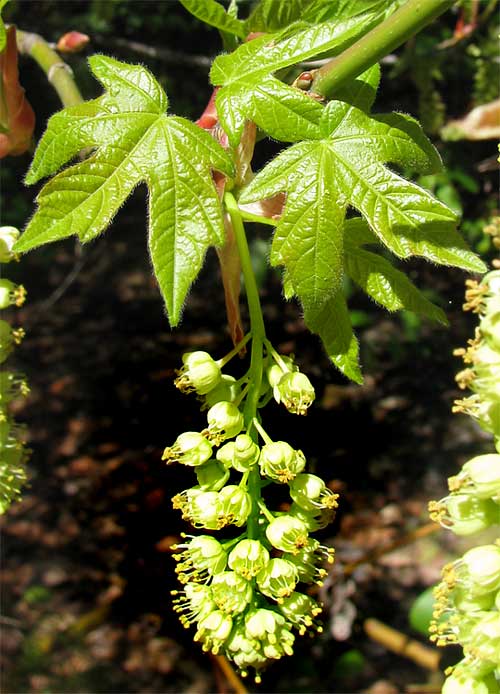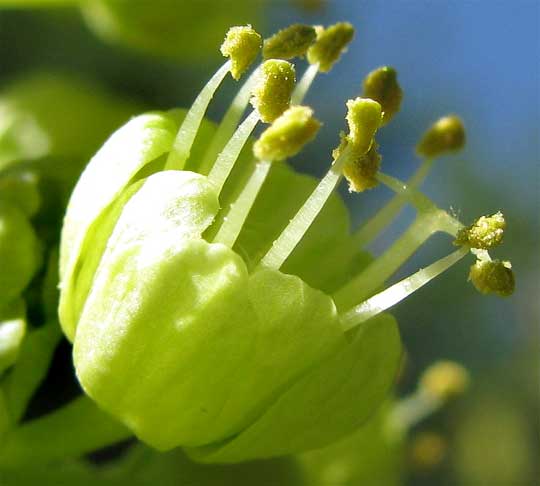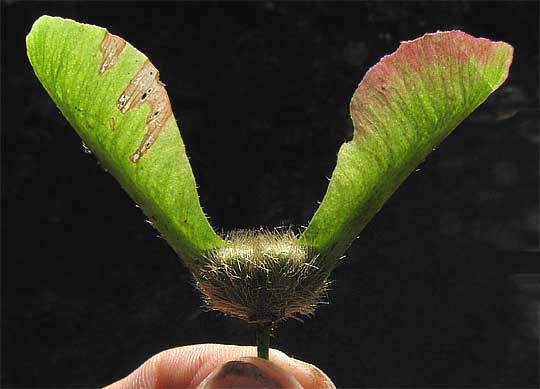Excerpts from Jim Conrad's
Naturalist Newsletter
from the April 26, 2009 Newsletter, issued from the Siskiyou Mountains west of Grants Pass, Oregon:
BIGLEAF MAPLE LOWERING
Especially along streams one of the most conspicuously flowering plants nowadays is that of the Bigleaf Maple, ACER MACROPHYLLUM, whose emerging leaves and 5-inch long drooping racemes of yellow flowers are shown below:

Easterners think of flowers of our native maples as being small, often unisexual and odorless, so the Bigleaf Maple's large, fragrant blossoms bearing both male and female parts may not seem like maple flowers at all. The fruits will turn out like "normal" maple samaras, however. You can see that the leaves are similar to maples back East -- except that they'll grow so large, averaging eight to twelve inches across, and some much larger. A flower close-up is below:

In that picture ten stamens with globular, pollen covered anthers emerge from the cuplike corolla. The racemes bear two kinds of flowers together, one flower type containing both male and female parts, the other only male stamens.
I grew up in western Kentucky with four maple species being very common in the area's woods. Here the Bigleaf, which grows 100 feet tall, is the only maple tree, though there's also a bushy Vine Maple I look forward to showing you. A website just on maples is at http://www.maple-trees.com/.
You can see that Bigleaf Maple leaves are similar to those of the East's Sugar Maples. The Bigleaf's sap contains about the same concentration of sugar as the Sugar Maple's, but it tastes different, and maple syrup is seldom made from it.
from the Ausugst 23, 2009 Newsletter, issued from the Siskiyou Mountains west of Grants Pass, Oregon:
BIGLEAF MAPLES FRUITING
Now those handsome trees are fruiting. The fruits are unmistakably maple fruits, which means that they are "samaras (SAM-er-uhs)," which are winged fruits that don't split to release their seed when they're mature. If you're only familiar with samaras produced by maples back East, you'll find the Bigleaf's samaras a bit unusual. Take a look at a joined couple below:

Pretty hairy around the seedcase, right? I'll bet that that keeps a few critters from eating them.